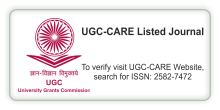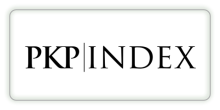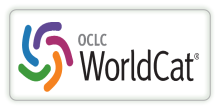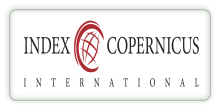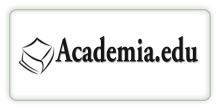A THEMATIC LITERATURE REVIEW ON SUSTAINABLE SUPPLY CHAINS IN FMCG AND THE WAY IT IMPACTS ORGANISATIONAL SUSTAINABILTY
DOI:
https://doi.org/10.29121/shodhkosh.v5.i5.2024.4526Keywords:
Fmcg, Supply Chain Management, Sustainable Ecosystem, Organizational Sustainability, Sscm, Sustainable Supply Chain ManagementAbstract [English]
The FMCG sector within the Indian economy is regarded as the fourth largest in terms of its magnitude. It stands as a crucial catalyst driving the Indian economy forward. Occupying the fourth position in the Indian economy, this sector caters to nearly three million individuals nationwide. These products are prevalent among individuals of all social classes, irrespective of their age, socioeconomic status, or social standing.
Comprising food and beverages, personal care products, and household items, these three primary segments collectively represent 19%, 31%, and 50% of the total industry. The FMCG sector in India derives over 40% of its revenue from semi-urban and rural regions, with a significant impact.
In the context of Indian economy, the Fast-Moving Consumer Goods (FMCG) industry holds a significant position, necessitating an adoption of sustainable practices. Incorporation of sustainability in FMCG sector not only tackles environmental issues but also presents possibilities for enduring economic and social advantages.
This Literature review-based research paper investigation concentrates on examining the sustainable supply chain practices in Fast-Moving Consumer Goods that is FMCG sector in India. The systematic investigation talks about potential areas for enhancing sustainable supply chain management within the Indian FMCG industry and anticipates the future integration of sustainability initiatives.
References
Kundu, S. et al. (2013). Identifying the physical distribution form and supply chain issues in marketing F%V products by organized supermarkets: a case on reliance distribution models [1].
Afrizal, M., & Miradji, M. (2014). Analysis Supply Chain Management pada PT. MONIER di Sidoarjo[1].
Rai, S., & Singh, D. B. (2011). Importance of inventory flow management [3].
Nguegan, C. A., & Mafini, C. (2017). Investigating supply chain management problems in the food processing industry [10].
Gilal, F. G., Gilal, R. G., Zhang, J., & Gilal, N. G. (2016). Three dimensions of supply chain management practices [10].
Hanf, J., & Gagalyuk, T. (2009). Chain management in transition economies [11].
Abbasi, M. N., & Hassan, N. M. (2014). Sustainable practices in logistics operations [12].
Aher, D. K. H., Ubale, S., & Ubale, D. S. (2024). Identifying critical factors in lean implementation for the manufacturing sector: A literature review. ShodhKosh: Journal of Visual and Performing Arts, 5(4), 1465–1471. https://doi.org/10.29121/shodhkosh.v5.i4.2024.4466 DOI: https://doi.org/10.29121/shodhkosh.v5.i4.2024.4466
Mentzer, J. T., DeWitt, W., Keebler, J. S., Minnich, S., & Nix, N. (2018). Definitional framework for supply chain management. Journal of Supply Chain Management, 54(4), 3-25.
Carter, C. R., & Ellram, L. M. (2015). Corporate sustainability and the supply chain: a decade of research. Journal of Supply Chain Management, 51(2), 9-36.
Christopher, M., & Gattorna, J. (2011). Collaborative planning, forecasting, and replenishment: A supply chain management approach. Routledge.
Gunasekaran, A., & Lai, P. S. (2021). Agile supply chain: frameworks, challenges and solutions. International Journal of Production Economics, 160, 289-300.
Stadtler, H., & Kilger, C. (2008). Supply chain management for agile manufacturing systems. Springer Science & Business Media.
Kundu, S. et al. (2013). Identifying the physical distribution form and supply chain issues in marketing F%V products by organized supermarkets: a case on reliance distribution models [1]. DOI: https://doi.org/10.1504/IJBPM.2013.056776
Afrizal, M., & Miradji, M. (2018). Analysis Supply Chain Management pada PT. MONIER di Sidoarjo[1].
Rai, S., & Singh, D. B. (2021). Importance of inventory flow management [3].
Nguegan, C. A., & Mafini, C. (2019). Investigating supply chain management problems in the food processing industry [10].
Gilal, F. G., Gilal, R. G., Zhang, J., & Gilal, N. G. (2020). Three dimensions of supply chain management practices [10].
Hanf, J., & Gagalyuk, T. (2019). Chain management in transition economies [11].
Abbasi, M. N., & Hassan, N. M. (2018). Sustainable practices in logistics operations [12].
Mentzer, J. T., DeWitt, W., Keebler, J. S., Minnich, S., & Nix, N. (2018). Definitional framework for supply chain management. Journal of Supply Chain Management, 54(4), 3-25.
Carter, C. R., & Ellram, L. M. (2019). Corporate sustainability and the supply chain: a decade of research. Journal of Supply Chain Management, 51(2), 9-36.
Christopher, M., & Gattorna, J. (2021). Collaborative planning, forecasting, and replenishment: A supply chain management approach. Routledge.
Gunasekaran, A., & Lai, P. S. (2020). Agile supply chain: frameworks, challenges and solutions. International Journal of Production Economics, 160, 289-300.
Stadtler, H., & Kilger, C. (2019). Supply chain management for agile manufacturing systems. Springer Science & Business Media
Downloads
Published
How to Cite
Issue
Section
License
Copyright (c) 2024 Mrs. Swapnali Prakash Jadhav, Prof Dr Satish Ubale, Dr Deepali Satish Ubale

This work is licensed under a Creative Commons Attribution 4.0 International License.
With the licence CC-BY, authors retain the copyright, allowing anyone to download, reuse, re-print, modify, distribute, and/or copy their contribution. The work must be properly attributed to its author.
It is not necessary to ask for further permission from the author or journal board.
This journal provides immediate open access to its content on the principle that making research freely available to the public supports a greater global exchange of knowledge.






